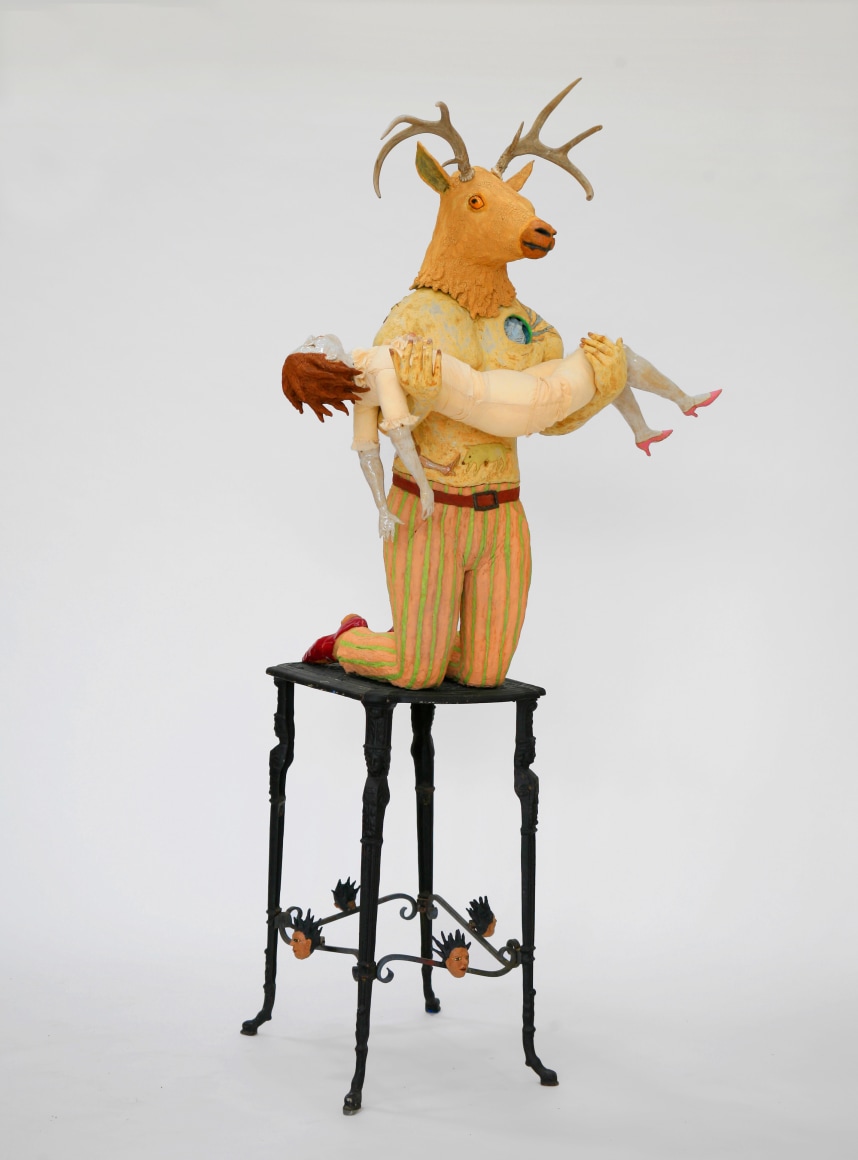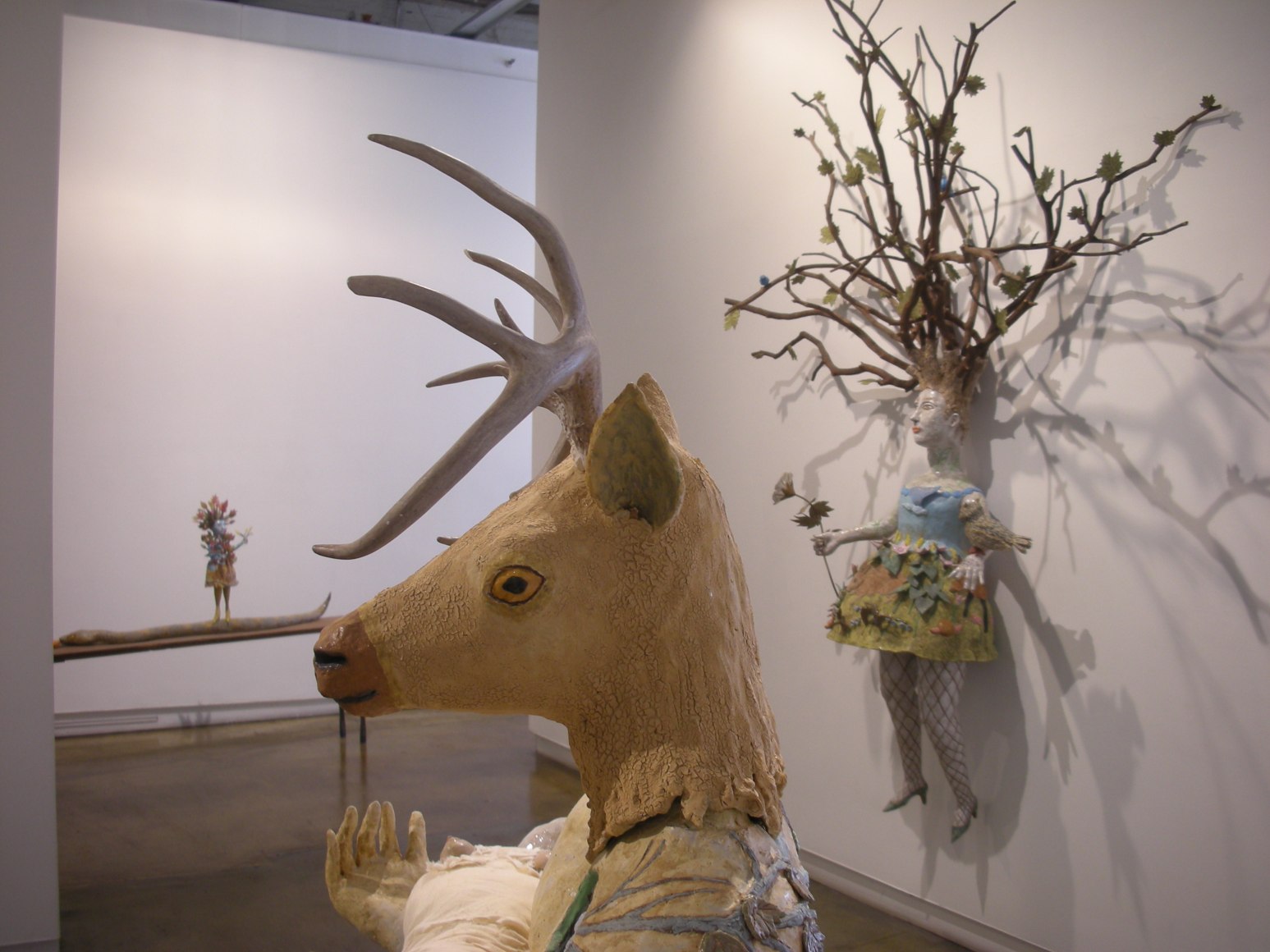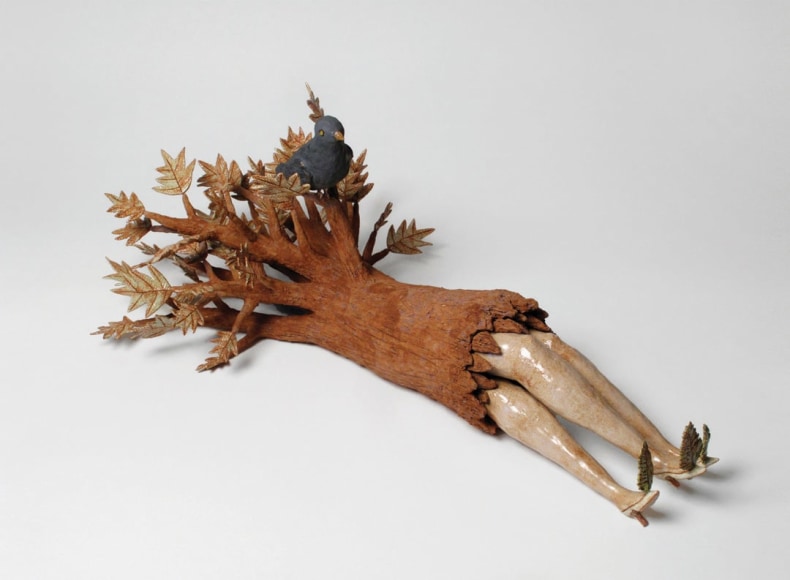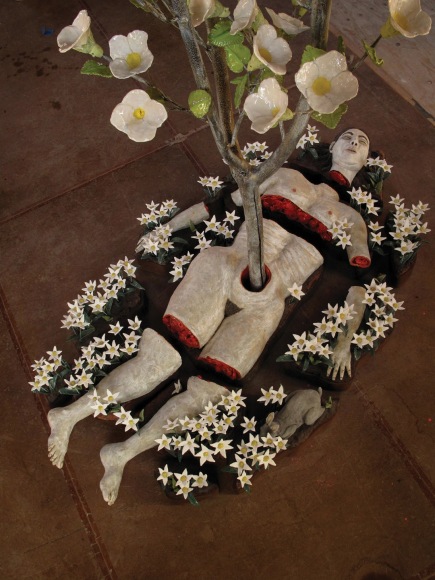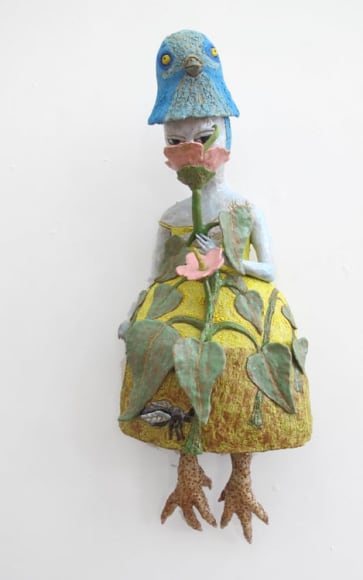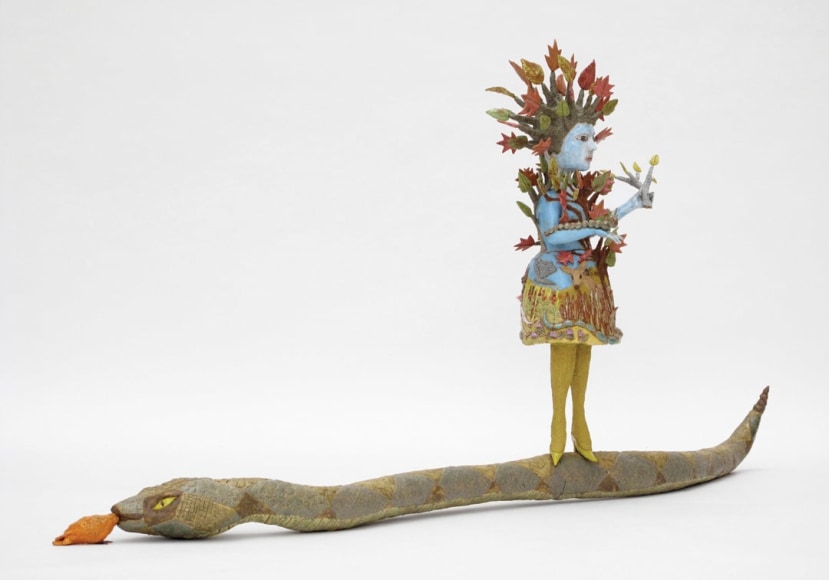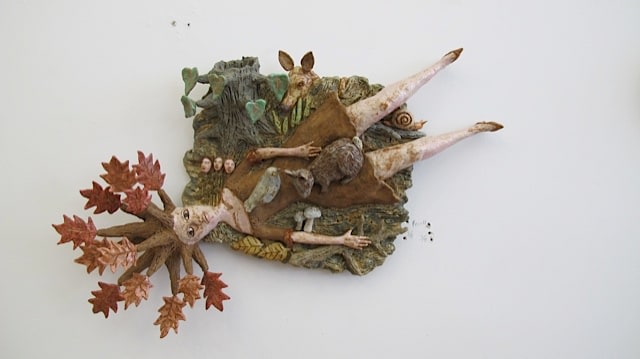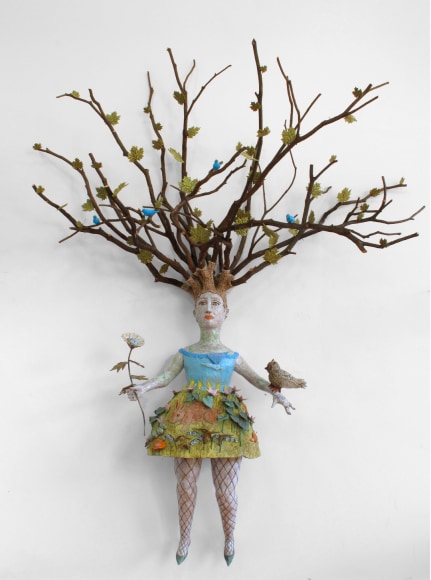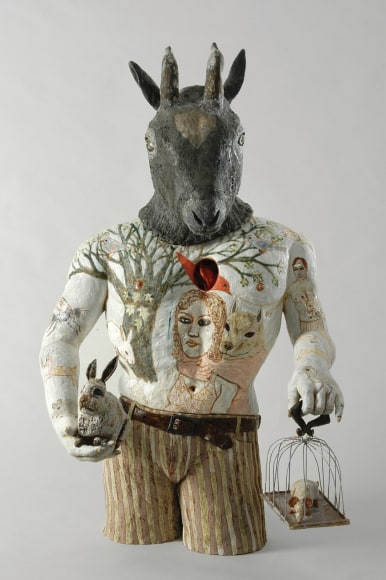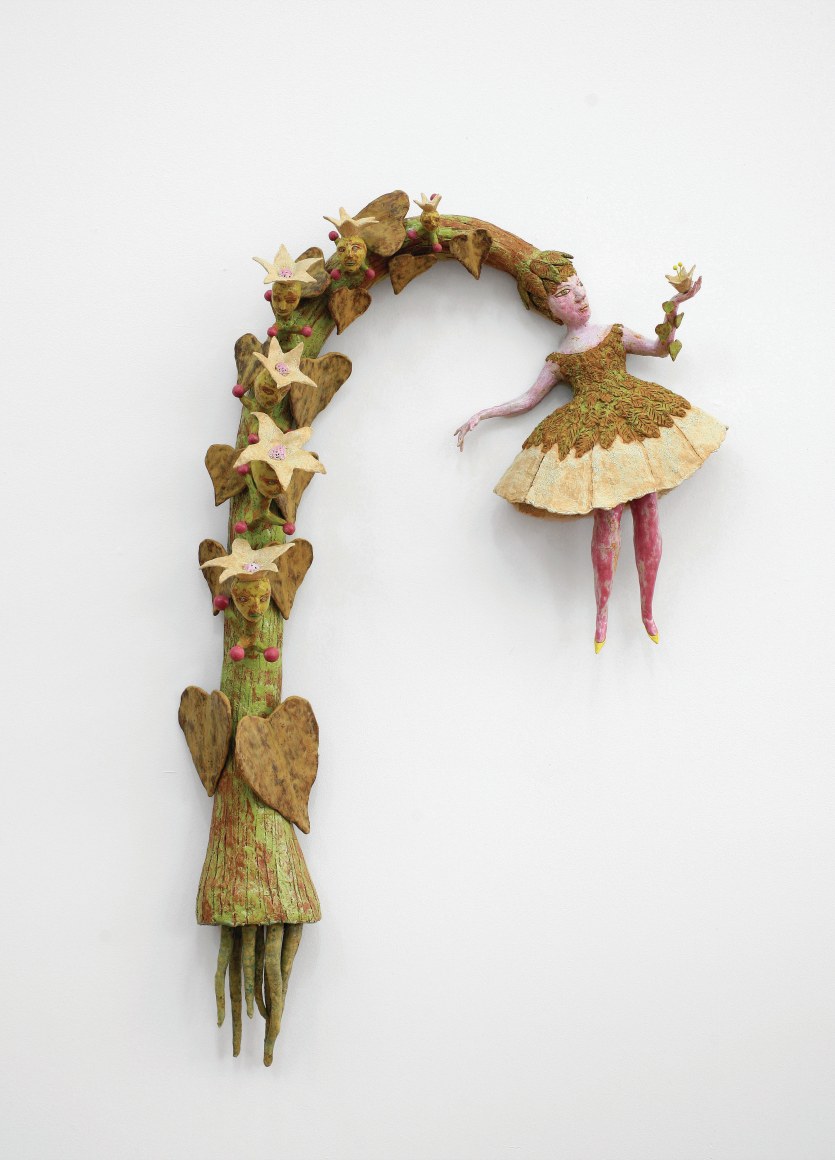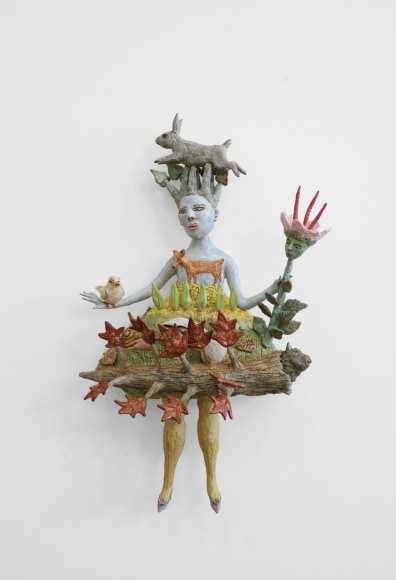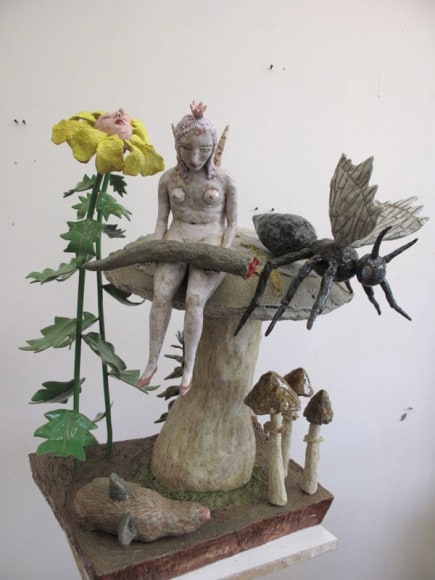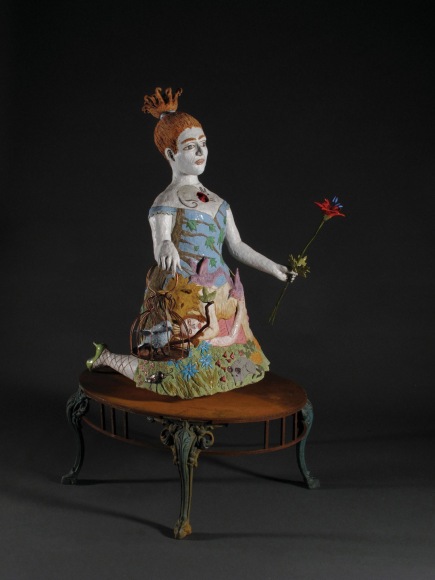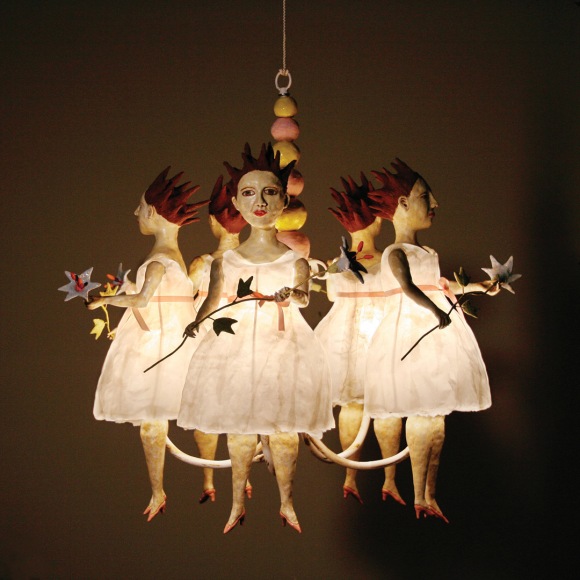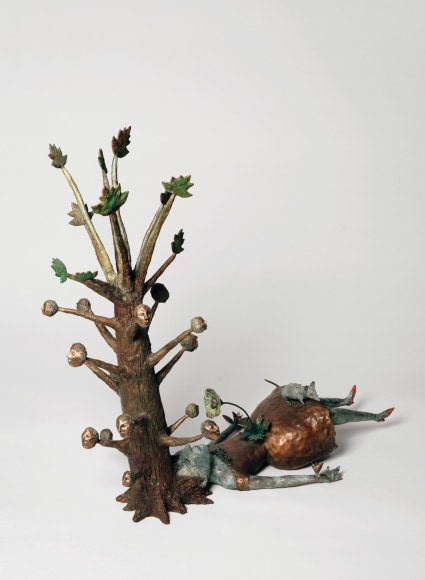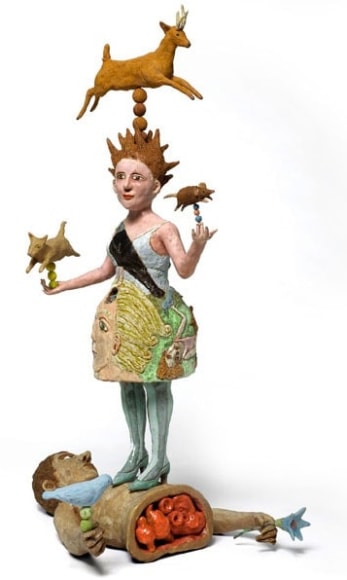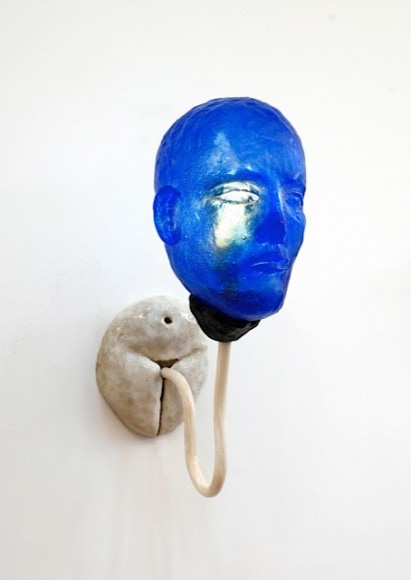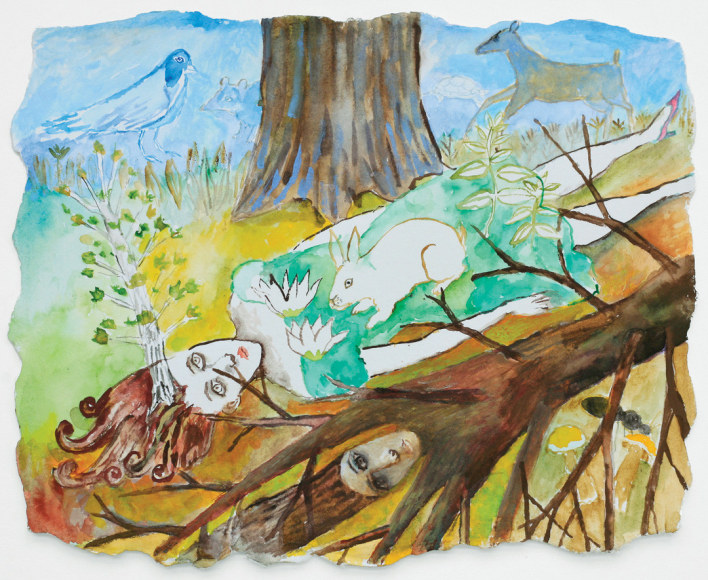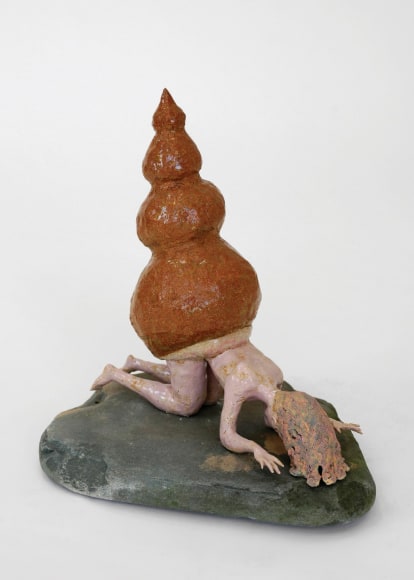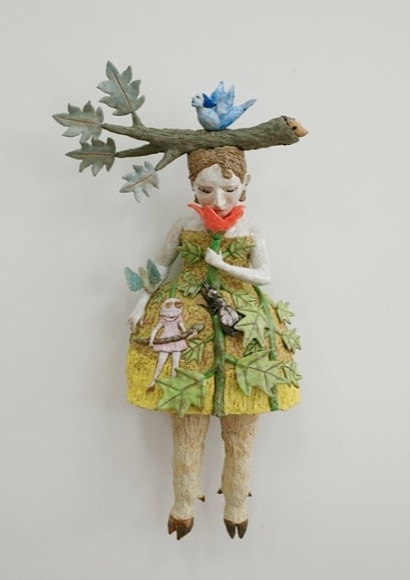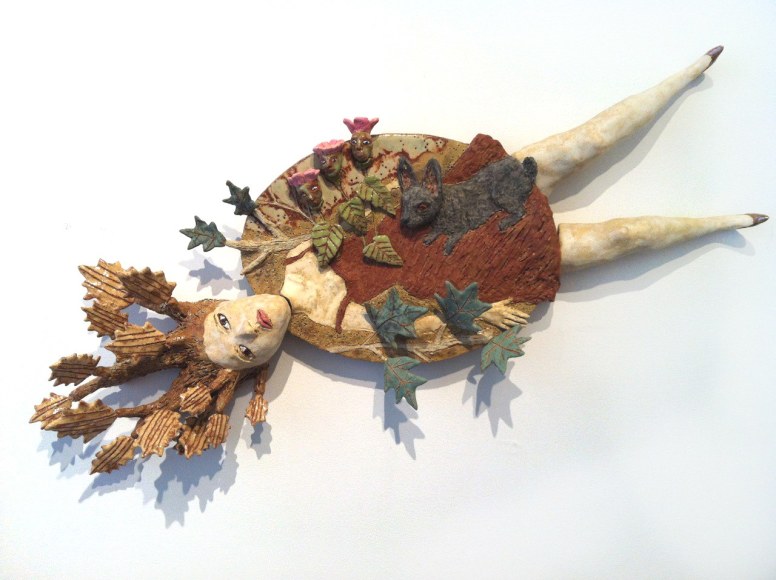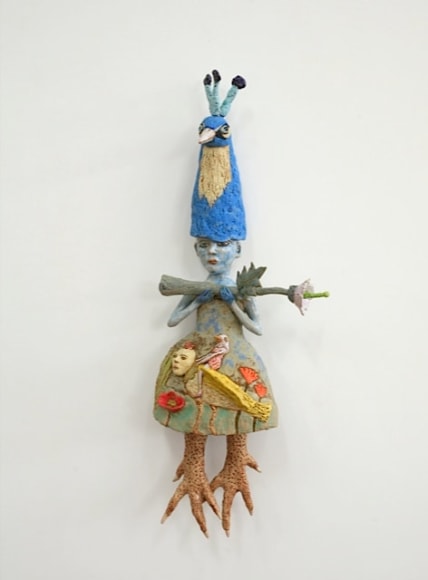“Dogman loved Ms. Rabbit Lady so much he wanted to run deep into the woods with her so he could eat her in privacy.” - Kathy Ruttenberg
Working with only “earth, fire and emotions,” Kathy Ruttenberg's fairytale-like ceramic sculptures create a world that is immediately captivating, but the viewer might be surprised by what’s down the rabbit hole.
Her first show at Stux Gallery, "The Earth Exhales", intersects in sensibility with works by artists such as Adriana Varejão, Arlene Shechet, and Kiki Smith, and may recall the theatricality of Mike Kelley, Louise Bourgeois and Mauricio Cattelan. Her violent and devastating visions are disturbingly peaceful, idyllic and sustainable. Erasing the boundary of the metaphorical and the literal, Ruttenberg’s world is filled with lush foliage, woodland creatures and puzzling, slightly grim yet open-ended reveries of gender relations. Men are always portrayed as animals in gentlemen's clothing, and women are always well-groomed and dressed in rounded skirts. On one hand, men are literally animal-like savages, but at the same time they are native creatures of the woodlands and the earth itself, whereas the female figures are the outsiders, if not intruders. It is hard to tell if they are men masquerading as animals, or vice versa. Death, in works such as “The Moment After”, is the stark aftermath of failed love, but also an opportunity to blossom imaginatively and become one with earth.
In “Submission”, a man with a deer’s head holds a woman in a Pieta fashion, but religious weight or any other references to non-romantic aspects of reality dissipate in Ruttenberg's wonderland. Their love story retreat behind their dead-pan, nonchalant expressions, and is instead narrated in a completely carnal and materialized manner: on the man’s back, two windows are carved out to display a mouse and a dog, and an image of a dog man eating her alive is tattooed on his skin. The occurrence of love is commemorated, and her demise and sacrifice are casually noted.
“Ladies Chaste”, a light sculpture, further complicates this discussion. The piece is composed of women alone, but the freedom from the dogman-ruled earth does not translate into relief. Literally suspended from the earth in a bright chandelier, the ladies are dressed in angelic, beribboned white dresses. The flowers that consumed their bodies in “The Moment After” are now uprooted and purely decorative. However, the women are identical, lifeless and stifled, dangling with detached joints like rack of unused puppets. Instead of imagined vegetation, they are consumed and saturated by real, artificial lighting, and have been reduced to a set of commercial light fixtures in exchange for gaining chastity. The burning bulbs echo the firing clay, and this time the agitating heat is tangible as the light casts on the viewer.


